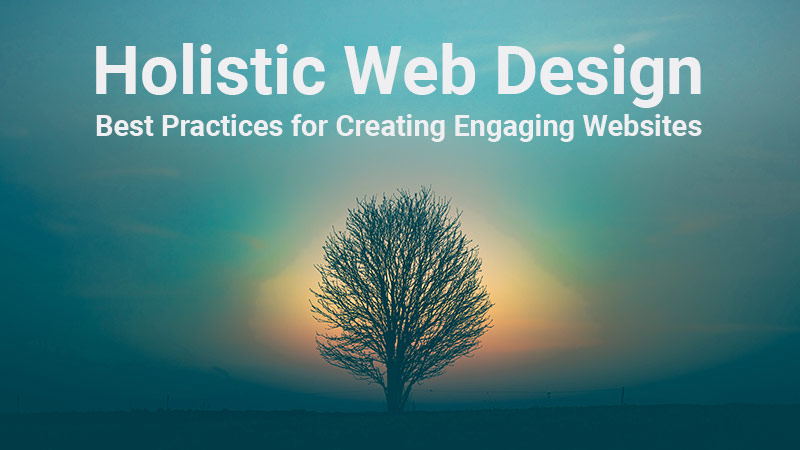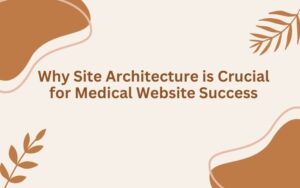Introduction
With the increasing demand for holistic services, it is essential for wellness practitioners to create a website that not only showcases their expertise but also resonates with their target audience.
It’s crucial to understand that holistic website design goes beyond aesthetics. It’s about creating an online space that reflects your unique brand and philosophy while providing a seamless user experience. By incorporating soothing colors, natural imagery, and intuitive navigation, you can create a visually pleasing and calming environment for your visitors.
In this article, we will explore the best practices for designing engaging websites tailored specifically for holistic practitioners. Whether you’re a health coach, reiki healer, therapist, masseuse, or any other holistic wellness practitioner, these tips will help you create a sensational online experience for your clients.
Understanding the Importance of Holistic Web Design
A holistic web design goes beyond aesthetics. It encompasses the overall user experience, ensuring that visitors feel connected, inspired, and informed. Here are a few reasons why holistic web design is crucial for healers and therapy practices:
- Reflecting your Brand Identity: Your website should accurately reflect your brand’s values, mission, and unique offerings. A well-designed website will help you establish credibility and differentiate yourself from competitors in the industry.
- Improving User Experience: A user-friendly website with intuitive navigation and clear messaging will enhance the overall user experience. Visitors should be able to find the information they need effortlessly and engage with your content seamlessly.
- Creating Emotional Connection: Holistic healing is deeply personal and requires a strong emotional connection with clients. Your website should evoke emotions and resonate with your target audience, encouraging them to explore further and take action.
- Increasing Conversions: An engaging website will drive conversions by encouraging visitors to take the desired actions, such as booking appointments, signing up for newsletters, or purchasing products and services.
Key Elements of Holistic Practitioners Websites
To create an engaging website that aligns with your holistic wellness practice, consider incorporating the following key elements:
1. Captivating Visuals and Branding
Your website’s visuals, including colors, typography, and imagery, play a vital role in capturing your audience’s attention and conveying your brand’s essence. Choose colors that reflect the energy and emotions associated with your practice. Select fonts that are legible and align with your brand’s personality. Incorporate high-quality images that evoke a sense of calm, serenity, and healing.
2. User-Friendly Navigation
A clear and intuitive navigation structure is essential for helping visitors easily navigate through your website. Consider organizing your content into logical categories and using descriptive labels for your menu items. Avoid cluttering your navigation with too many options, as it may overwhelm users. Make it effortless for visitors to find the information they are seeking.
3. Compelling Content
Another vital aspect of holistic website design is to create high-quality content. You must ensure that your content is informative, interesting, and easy to digest. Utilize your website to share your expertise, educate your audience, and provide valuable resources such as blog articles, e-books, or podcasts. By offering valuable content, you establish yourself as a trusted authority and encourage visitors to explore further.
Develop informative and engaging copy that showcases your expertise and demonstrates the value you provide. Use storytelling techniques to connect with your audience on a deeper level. Incorporate testimonials and success stories to build trust and credibility. Remember to optimize your content with relevant keywords to improve search engine visibility.
4. Mobile-Friendly Design
In today’s mobile-driven world, it is imperative to have a website that is optimized for mobile devices. Ensure that your website is responsive, meaning it adapts seamlessly to different screen sizes. This will provide a consistent and user-friendly experience across all devices, enhancing engagement and accessibility.
5. Call-to-Action (CTA) Buttons
Strategically placed call-to-action buttons prompt visitors to take specific actions, such as booking a consultation, subscribing to a newsletter, or making a purchase. Use clear and compelling language in your CTAs, and ensure they stand out visually. Experiment with different placement and design options to maximize conversions.
6. Integrating Social Media
Social media is a powerful tool for holistic practitioners to connect with their audience and share valuable content. Integrate social media buttons and feeds into your website to encourage visitors to engage with your social channels. This allows them to stay connected and updated on your latest offerings, events, and insights.
7. Testimonials and Reviews
Testimonials and reviews from satisfied clients are invaluable in building trust and credibility. Showcase positive feedback on your website to highlight the effectiveness of your services. Consider including client testimonials in various formats, such as written testimonials, video testimonials, or case studies.
8. Blog and Resources
A well-maintained blog and resources section can position you as an authority in your field. Regularly publish informative and relevant content that addresses your audience’s pain points and provides practical solutions. This not only attracts organic traffic to your website but also establishes you as a trusted source of information.
9. Easy Contact and Booking Options
Make it easy for visitors to contact you or book appointments directly from your website. Include a prominent contact page with your preferred contact methods, such as phone, email, or contact form. Consider integrating an online booking system that allows clients to schedule appointments conveniently.
10. Analytics and Tracking
Implementing analytics and tracking tools, such as Google Analytics, is essential to monitor the performance of your website. Analyze user behavior, track conversions, and identify areas for improvement. Use this data to make data-driven decisions and optimize your website for better results.
Conclusion
A well-designed and engaging website is crucial for wellness practitioners if they want to attract clients and thrive online. By implementing the best practices of holistic web design, they can create an online presence that showcases their expertise, connect with their audience on a deeper level, and drive conversions.
Furthermore, they need to continuously analyze and optimize websites to stay ahead in the competitive holistic wellness industry. Embrace the power of holistic web design and watch your online presence flourish.
Photo Credit: Unsplash






